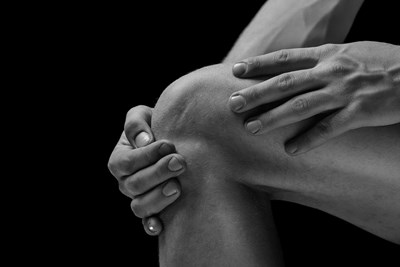Rheumatoid arthritis (RA) is a chronic, systemic inflammatory disorder that typically affects joints in the hands and feet. Unlike osteoarthritis, which causes damage and degeneration strictly to joint cartilage, RA affects the joint lining, resulting in painful swelling, bone erosion, and in severe cases joint deformity.
RA is an autoimmune disorder, which means a body's immune system mistakenly attacks its own tissues. This typically happens on both sides of the body (both hands, wrists, and/or knees), and this symmetry helps distinguish rheumatoid from other types of arthritis. In addition to joints, it is possible for RA to affect other parts of the body, including the skin, eyes, lungs, heart, blood, and nerves. Approximately one percent of the world's population suffers the condition. It is three times more common in women than men and generally develops between ages forty and sixty.
Causes
The causes of RA are unknown, though genetic components have been suspected. It is a painful, and potentially disabling, condition that can lead to substantial loss of functioning and mobility if not adequately treated. Clinical diagnosis is based on symptoms, physical exam, x-rays, and labs (blood tests). Typically, a rheumatologist (an expert in autoimmune diseases) performs the diagnosis and long-term treatment of RA.
Symptoms
RA symptoms begin with the affected joints swelling, then becoming warm, painful and stiff, particularly upon waking up in the morning or after extended periods of inactivity. This increased stiffness generally lasts for at least an hour, if not longer. Gentle movements may relieve symptoms in the disease's early stages. In later stages, the inflammatory activity causes tendon erosion and damage to the joint surface, which impairs range of motion and may lead to deformity. Other possible RA symptoms include joints that are tender to the touch, red and puffy hands, firm bumps of tissue under the skin (rheumatoid nodules) on one's arms, fatigue, fever, and weight loss. These symptoms can vary in severity and can come and go with alternating flare-ups and periods of relative remission when the swelling, pain, difficulty sleeping and weakness fade or disappear. One should consult a physician when experiencing persistent discomfort and swelling in multiple joints on both sides of the body. RA primarily affects joints, but problems involving other organs of the body are possible and occur in about 15-25% of individuals with the disease. Anemia (literally meaning lack of blood), is quite common in those suffering from RA.
Treatment
RA treatment can take on many forms. There is no cure, but treatments including medications, rest and exercise, and surgery can relieve the symptoms and slow the degenerative process. Type of treatment depends on a person's age, current health, health history, and severity of the arthritis. Over-the-counter drugs, both pills (aspirin, ibuprofen, naproxen) and topical creams applied directly to the skin, are available to help relieve joint pain and reduce swelling and stiffness. Physicians may prescribe stronger medicines for more severe cases, such as corticosteroids (prednisone) and narcotic pain relievers. Additionally, many strong medications, called disease-modifying antirheumatic drugs (DMARDs), treat RA by interfering with the immune system's attack on the joint tissue. There are also lifestyle modifications one can make in order to slow the process or reduce the risk of developing RA. Occupational and physical therapy can teach one how to protect the joints. Using specially designed gripping and grabbing tools for everyday tasks, and a cane when walking may also help. Smoking cigarettes increases the risk of developing the disease, but quitting can reduce that risk. Finally, a balance of rest and exercise is important to any RA treatment. Rest inflamed joints, and learn how best to strengthen the surrounding muscles during remission.




